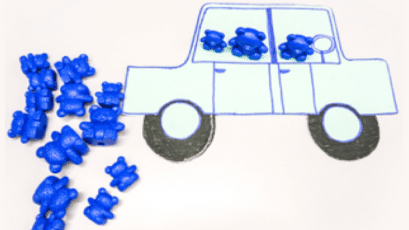Addition and Subtraction
Using Language Stages to Guide the Development of Concepts – Addition (Part 1)
The language stages
Over 30 years ago, I worked with students who were experiencing difficulties with problem solving and generally applying mathematics. From that work and my continued focus on helping all students succeed with mathematics, it became apparent that the language students know is a major factor in their success. In order to build understanding and confidence, we use a 4-stage model to guide the development of mathematical concepts. In this blog, I want to quickly outline the language stages that can be used to guide the development of the idea of addition.
Student Language
This is the language that comes from the child’s everyday world experiences – including both fiction and nonfiction situations. Stories, pictures, and the children’s experiences are the source for this language.
Materials Language
This is the language that comes from using concrete and pictorial materials. Children use new language as they explore the idea. Concrete materials are used first. Pictorial materials help to extend and expand the language. This broadens the understanding associated with the concept being developed.
Mathematical Language
Mathematical words are verbalized and read that relate to the idea. By this stage, some children want to a write the words and expressions.
Symbolic Language
These are the mathematical numerals and/or symbols that represent the idea. At first, these should be used to record the ideas. Later the focus can shift to developing strategies for finding “the answer.”
Developing the Addition Concept
The addition concept has two types of situations – active and static. Active situations show the idea of combining, then later, reversing. Static stories show balance to support the part-part-total idea. Both are important for children to experience, but for the sake of brevity, the examples here will focus on active addition.
Student Language
The story Bears on Buses* is a story about different groups of bears getting on buses to attend a picnic. The action of getting on a bus represents the active idea of the addition concept. Teachers read the story with their own natural interaction and questioning. (Click on the Resource Hub below to access the flipbook of Bears on Buses.)
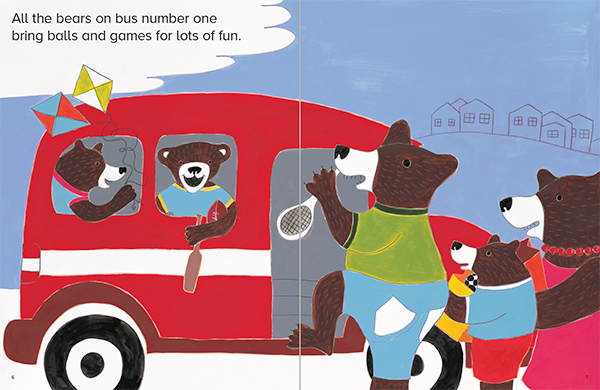
At the next lesson, teachers read the story and, for each scene, stop to count how many bears are on the bus and how many will get on the bus. The story is reread and children are asked to determine how many bears are on the bus, how many are getting on the bus, and how many altogether or in total.
Materials Language
With a small group of children, teachers show each double-page spread and have the children match the bear groups with the bear counters. Then children are encouraged to push one group to the other group to support the action in the story.
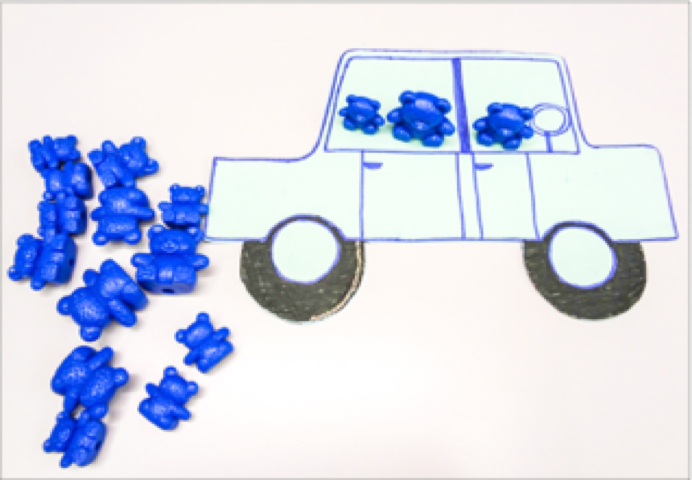
Mathematical Language
In this stage, mathematical words, often written on cards, are used along with manipulatives to introduce add and plus. The children can read a number expression and make groups to show the addends and then determine the total.
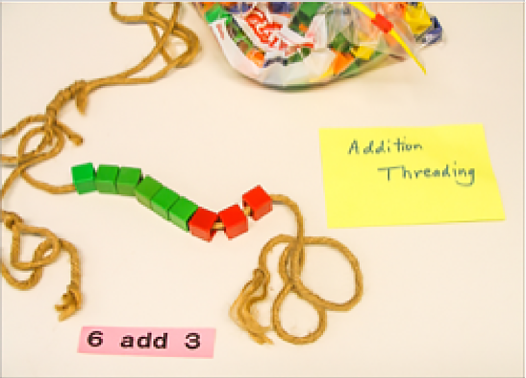
Students are encouraged to use cards (as shown in the photo above) to read the addition language word and make the two groups to match the expression. In the picture below, the numbers and word are written on zipper bags. The students use counters or links to show the expression.
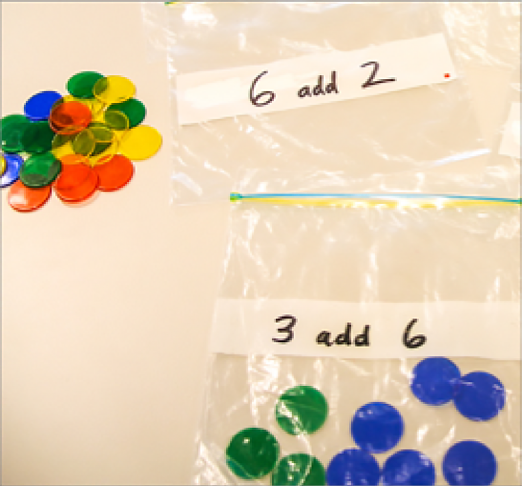
Symbolic Language
Introduce the addition symbol (+) by verbally calling it “add,” as it is the verb for addition. Accept “plus” from children, but model the use of the word “add” to support their reading skills. Children like the double “d” in “add” and find the word easy to read. Practical materials, such a beans, can be used to match the symbolic expression.
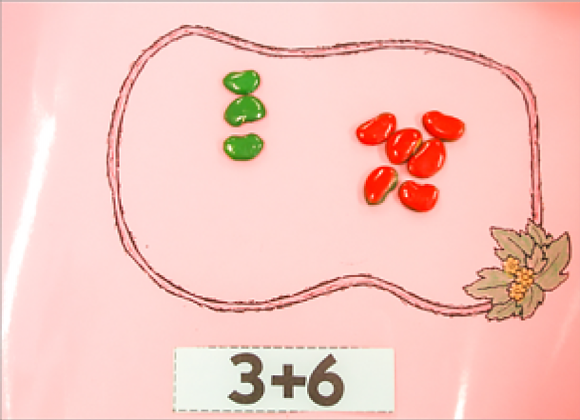
During the development of the addition concept, ask children to say numbers they know (these are the parts) and say what they do to find the total. Felt boards serve as a resource to advance from concrete counters to pictorial work. Use the word cards with other felt characters to show the two groups. Connect to children’s interests to allow many opportunities to see part-part-total with objects and pictures.
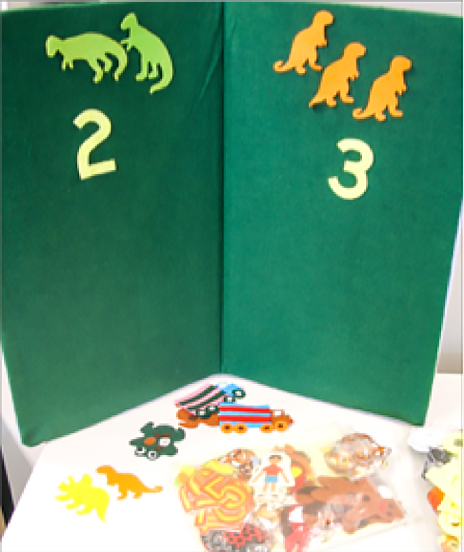
Making Sense
Language helps children make sense when they need to use mathematics. Having a clear picture of the useful mathematics concepts is a key aspect. Throughout the development of mathematical ideas, we must keep the language growing. As the language grows, the picture of the idea broadens and the thinking expands. Addition is the first concept of an operation that children encounter. Using the language stages deepens the understanding of this fundamental mathematics concept. Try using stories and familiar resources to create interesting addition learning experiences in your early childhood environment.
In my next blog we will discuss using language stages to guide the development of measurement concepts.
*Bears on Buses is a Big Book available from ORIGO Education
Note: Many of the ideas in this blog have been suggested by Rosemary Irons and appeared in The Journal of the Early Childhood Teachers Association, Queensland, March, 2014
Click HERE to view the resource for this article!
About the Author
Calvin Irons cofounded ORIGO Education with James Burnett in 1995. Cal has been involved in mathematics education for over 50 years. He started his career as a specialist teacher of mathematics in Iowa after completing his BA and MA at the University of Northern Iowa in 1967. Dr. Irons received his PhD from Indiana University in 1975 (the dissertation topic was the teaching of division). In 1975, he accepted a position at the Queensland University of Technology, Brisbane, Australia where he has been involved in the teaching and the development of mathematics curricula for elementary schools. He has received outstanding achievement awards from the university for his work and in 2014 was the student’s nominee for University Outstanding Teacher of the Year from a university faculty of over 3000 professors. He is the author/co-author of over 600 books or articles including the award-winning ORIGO Stepping Stones mathematics program.
About ORIGO Education
ORIGO Education is dedicated to making learning mathematics meaningful, enjoyable and accessible for all, offering Pre-K through Grade 6 instructional materials, and professional learning.
![]()


